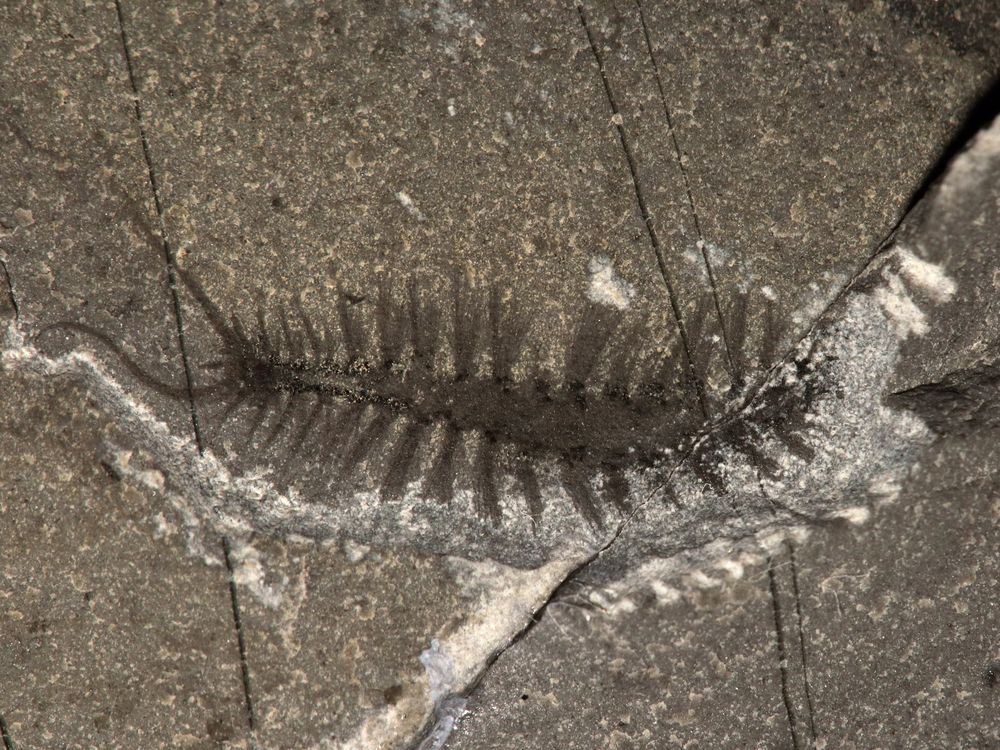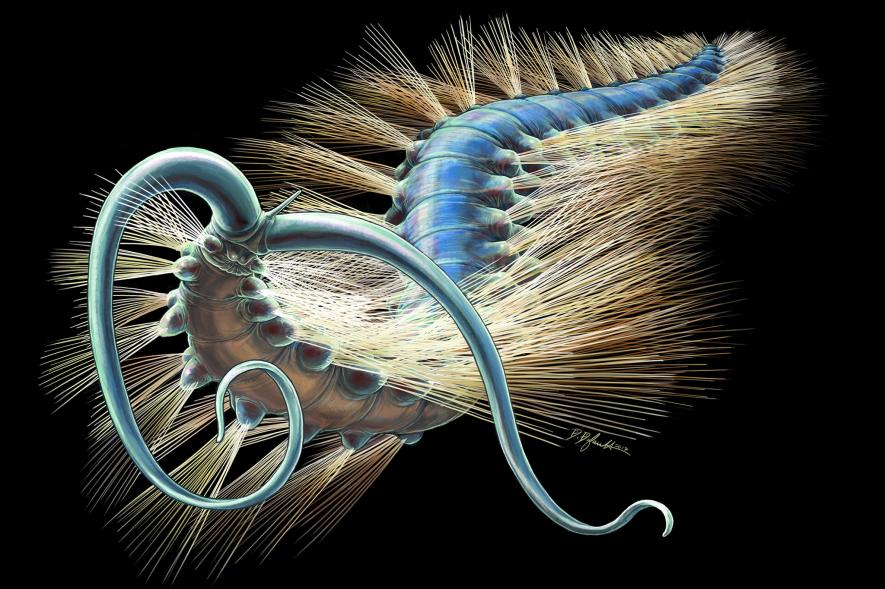@WFS,World Fossil Society,Riffin T Sajeev,Russel T Sajeev
TORONTO — A new fossil species of bristle worm has been found at the 508-million-year-old Marble Canyon site in B.C.’s Kootenay National Park.
The worm found at the Burgess Shale site is helping scientists better understand analids, which include present-day leeches and earthworms.They are found in nearly all marine environments.

Kootenayscolex barbarensis is part of a group of animals called annelids (or the ‘ringed worms’) is shown in this handout image.HO / THE CANADIAN PRESS
The early evolutionary history of analids, in particular the origin of their heads, has a relatively poor fossil record.
The new fossil provides insight into its head, as well as its role in the food chain.The research was published today in the journal Current Biology by scientists from the Royal Ontario Museum and the University of Toronto.
The new species is called Kootenayscolex barbarensis.
“It’s a totally new species to science,” says Karma Nanglu, a PhD candidate in the department of ecology and evolutionary biology. “It’s really small … It’s about two-and-a-half centimetres in total length.
“The bristles on this animal are on the order of 10 to 30 micrometres in width.”
The Marble Canyon fossil site, home to at least a dozen new species, was stumbled upon by researchers in 2012 in Kootenay National Park as they worked at the nearby Stanley Glacier site.
It’s believed the area and its fossils will further the understanding of animal life during the Cambrian Period, when most of the major groups of animals appear on the fossil record.
The site is about 40 kilometres south of the original Burgess Shale in Yoho National Park that was discovered more than 100 years ago.
source: By Colette Derworiz in Edmonton



 January 22nd, 2018
January 22nd, 2018  Riffin
Riffin 
 Posted in
Posted in  Tags:
Tags: 